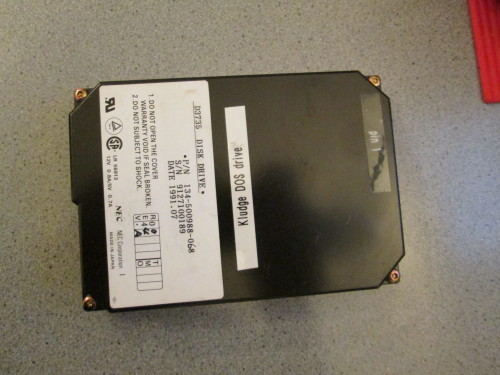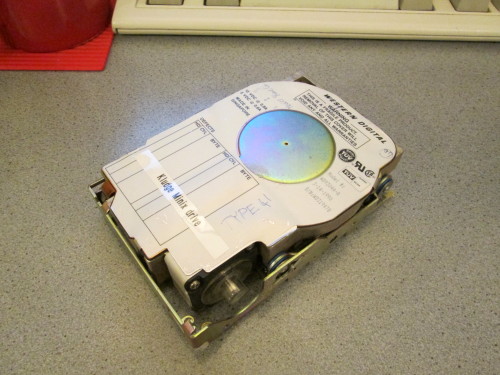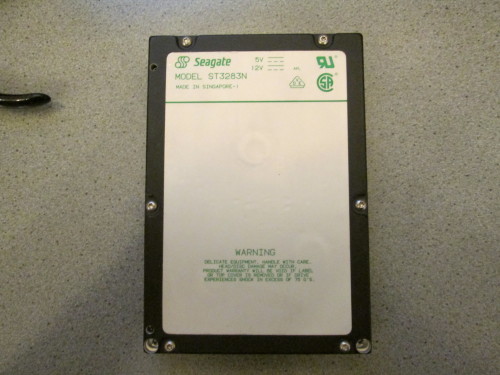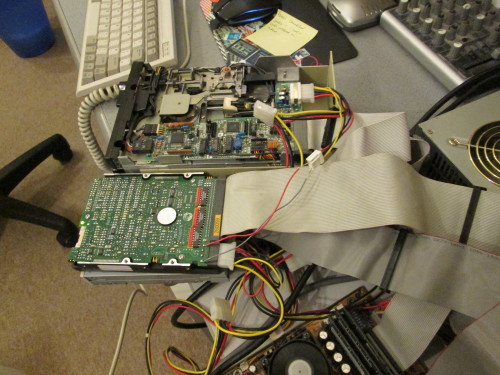I thought it'd probably be worth going through the older hard disks in my junk box...
Kludge was a 286 machine without a case; I used it for PIC development under MS-DOS, and to play with Minix. (The reason it didn't have a case was that I stole it for the 486 I was archiving a couple of weeks ago...)
This NEC D3735 40MB IDE disk was the MS-DOS drive: it contains an MS-DOS 5 installation, with KA9Q NOS and some other networking bits, besides the PIC cross-assembler and programmer software that I'd used for my SIMBA project.
This rather splendid stepper-motor WD93044-A was the Minix drive — but while it spins up, it doesn't get detected by my imaging machine. Hard Drive History's WD93044 page starts with "These sold in their thousands, unfortunately"...
This Seagate ST3283N was a reasonably nice 250MB SCSI disk for the time — I suspect I was given it because it has a couple of pins broken off the power connector. I'd fixed this previously by soldering a wire-ended replacement on, which I'd taken off again when fitting the CF card to my A1200. As a quick bodge, soldered some solid wires into place and poked them into a floppy power connector...
... and it works! It makes a worrying "snap" sound on startup, like a capacitor blowing, but it also does the same on shutdown, so I guess it just has a very noisy head-parking mechanism. It's also got an impressive number of neatly-arranged discrete components on the underside of the PCB.
Examining the contents shows it was the homes filesystem from my home
router — the only nontrivial file is my .bash_history.
This all goes to show that the amount of effort I have to put into
reading a hard disk is inversely proportional to how interesting the
data on it is.



